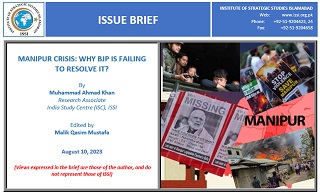It has been three months since violence in Manipur started on May 03, when Kukis and Nagas organized a “Tribal Solidarity March” in coordination with All Tribal Student Union Manipur (ATSUM) in ten of the sixteen districts.[1] The protests were staged against the Manipur court orders to grant to the Meiteis ‘Scheduled Tribes’ (ST) status, referring the case to the Central government. In return, Meiteis organized protests and blockades, resulting in conflicts between the two communities. So far, the conflict has resulted in more than 130 deaths, 400 wounded, and 55,000 displaced.[2] The Union government adopted a deplorable silence when churches and homes were vandalized in the state. There are reasons and similarities in the patterns that are followed in Manipur and in violence carried in other states from history as happened in Gujarat, that need to be analyzed.
Manipur is a vast state with around 3.2 million population. Hindus are the majority comprising 41 per cent, while Christians make up 40 per cent of the population.[3] The state is divided into two major ethnic groups: Meiteis, living in Imphal Valley; and Kukis, with Nagas, in the hilly areas surrounding the Valley. Meiteis are mostly Hindus, while Kukis are mostly Christians.[4] Most of the events like burning churches and targeting religious sites have religious motivations behind, besides the issue being of social and ethnic in nature. As the Bharatiya Janata Party (BJP) rules in Manipur, ‘Hindutva’ backed forces are becoming active in recent violence.
















